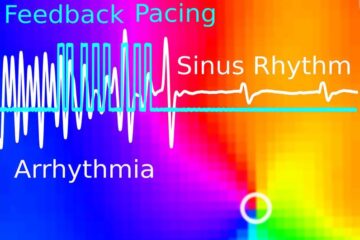New stem cell source could boost bone marrow success

Uncharted area of umbilical cord offers hope
University of Toronto researchers have discovered an ample source of stem cells in an uncharted part of the umbilical cord, providing new hope for bone marrow transplants and tissue repair.
The study, published in the February issue of Stem Cells, outlines how researchers discovered that the jelly-like connective tissue surrounding the blood vessels of the human umbilical cord, the so-called “Wharton’s Jelly,” is rich in mesenchymal progenitor cells – cells that generate bone, cartilage and other tissues – and can be harvested to generate an abundant supply in a short amount of time. This expandable source of progenitor cells could greatly improve bone marrow transplantation, a painful yet common procedure that currently has a 30 to 40 per cent success rate in treating disease.
Professor John Davies of U of T’s Institute of Biomaterials and Biomedical Engineering (IBBME) and the study’s lead author, says that the cells around the vessels – human umbilical cord perivascular (HUCPV) cells – were often discarded because previous research has concentrated only on the cord blood, where the frequency of mesenchymal stem cells is only one in 200 million. The frequency in the HUCPV cells is one in 300. “We hypothesized that since the umbilical cord grows so rapidly during fetal development, there must be some source producing these mesenchymal stem cells,” says Davies. “We found that the jelly tissue immediately around the vessels had the richest population of these cells. Once we isolate them, it only takes 21 days to generate enough stem cells for up to 1000 therapeutic cell doses.”
Bone marrow transplants treat diseases such as cancers and immune deficiency disorders by replacing diseased cells with fresh ones found inside bones. The transplant requires hematopoietic stem cells (blood-forming stem cells) and, ideally mesenchymal stem cells too, both of which are found in the marrow, to work efficiently. Other research indicates that infusing the marrow with added mesenchymal stem cells can increase the transplant success rate.
“Mesenchymal stem cells can leave the marrow during injury and actually home to the tissue which is damaged,” says Davies. “This is why these cells are very important to us in an ongoing state of tissue repair throughout life.” Davies says that administering extra mesenchymal progenitor cells can also help repair broken bones or build new cartilage.
To harvest the HUCPV cells, Davies and his team split open umbilical cords and pulled out the blood vessels with their surrounding Wharton’s Jelly. (All the cords come from consenting full-term patients.) The vessels were sutured closed and suspended in collagenase, an enzyme that breaks down the Wharton’s Jelly around the vessels to release the cells inside. The HUCPV cells were then isolated and cultivated in vitro.
Many parents already freeze the cord blood cells containing hematopoietic stem cells, but U of T professor Bill Stanford, also part of the IBBME, and his wife who is also a stem cell researcher were the first to take advantage of the study by freezing the HUCPV cells in their son’s umbilical cord. Their son was born in April 2004. “Any parent who banks their cord blood or, in this case, the HUCPV cells, hopes they never have to use them,” says Stanford. “We were already banking our son’s cord blood cells so why not bank his HUCPV cells? The data in this study just got better and better and we were too impressed by this source of stem cells not to take advantage of this biological insurance.”
According to Davies, the next step is to test the HUCPV cells in immunological compromised animals such as mice. “While we still have some way to go until this therapy is ready for clinical trials, I am hopeful HUCPV cells could radically improve the success of bone marrow transplants,” he says.
Media Contact
More Information:
http://www.utoronto.caAll latest news from the category: Life Sciences and Chemistry
Articles and reports from the Life Sciences and chemistry area deal with applied and basic research into modern biology, chemistry and human medicine.
Valuable information can be found on a range of life sciences fields including bacteriology, biochemistry, bionics, bioinformatics, biophysics, biotechnology, genetics, geobotany, human biology, marine biology, microbiology, molecular biology, cellular biology, zoology, bioinorganic chemistry, microchemistry and environmental chemistry.
Newest articles

Wildfire danger to increase due to climate change
WSL Institute for Snow and Avalanche Research (SLF) researchers expect an elevated wildfire danger in the Alpine Foreland from 2040 onwards due to changing meteorological conditions. The danger currently remains…

Advanced Brain Science Without Coding Expertise
Researchers at Helmholtz Munich and the LMU University Hospital Munich introduce DELiVR, offering a new AI-based approach to the complex task of brain cell mapping. The deep learning tool democratizes…

Gentle defibrillation for the heart
Using light pulses as a model for electrical defibrillation, Göttingen scientists developed a method to assess and modulate the heart function. The research team from the Max Planck Institute for…





















